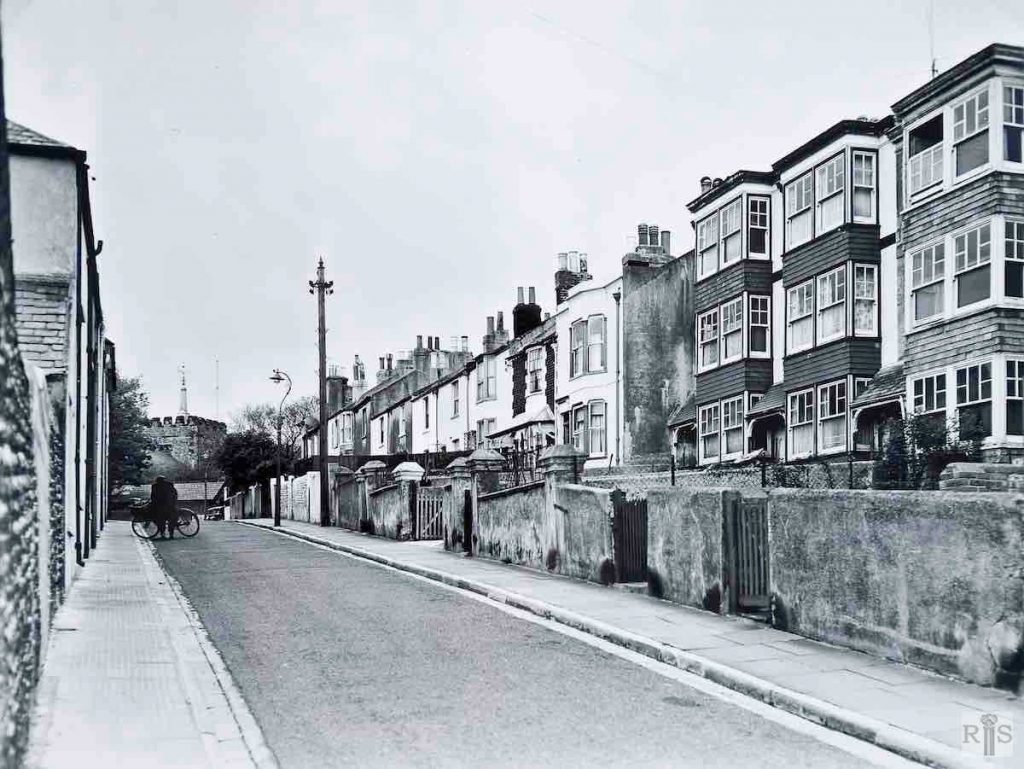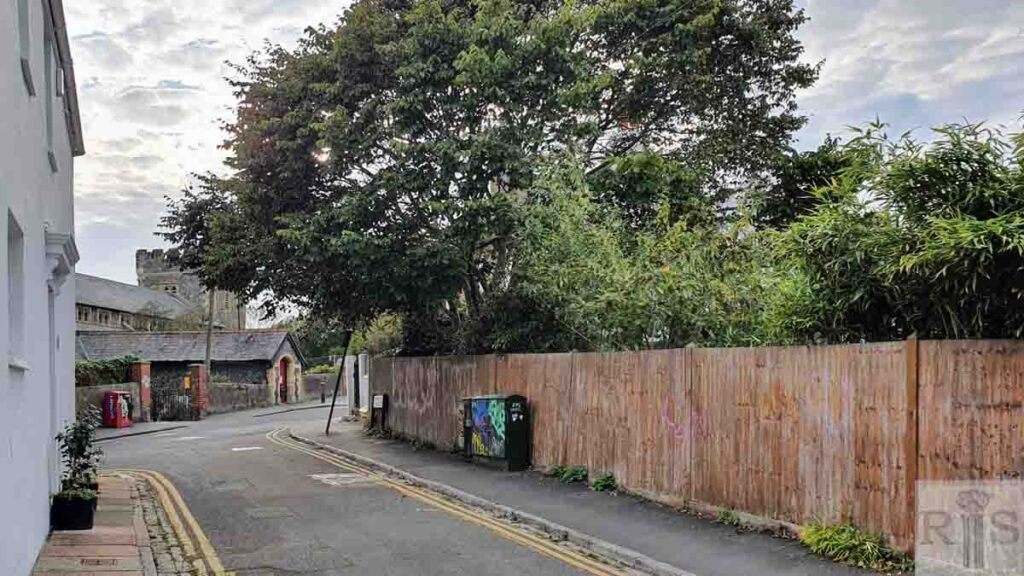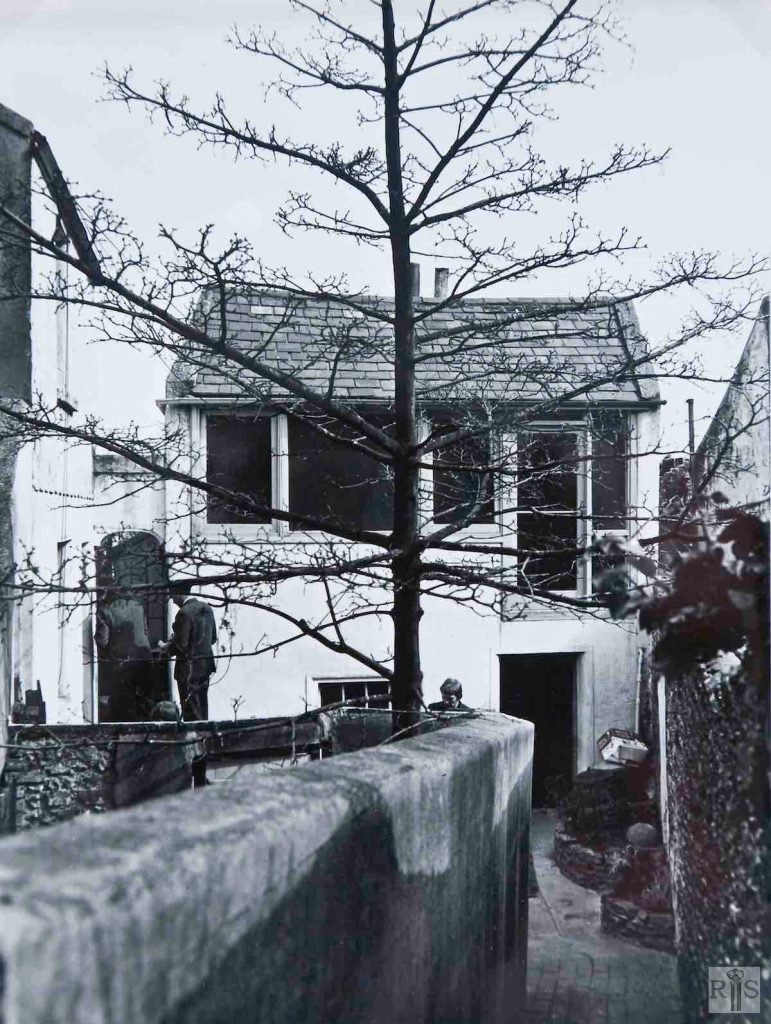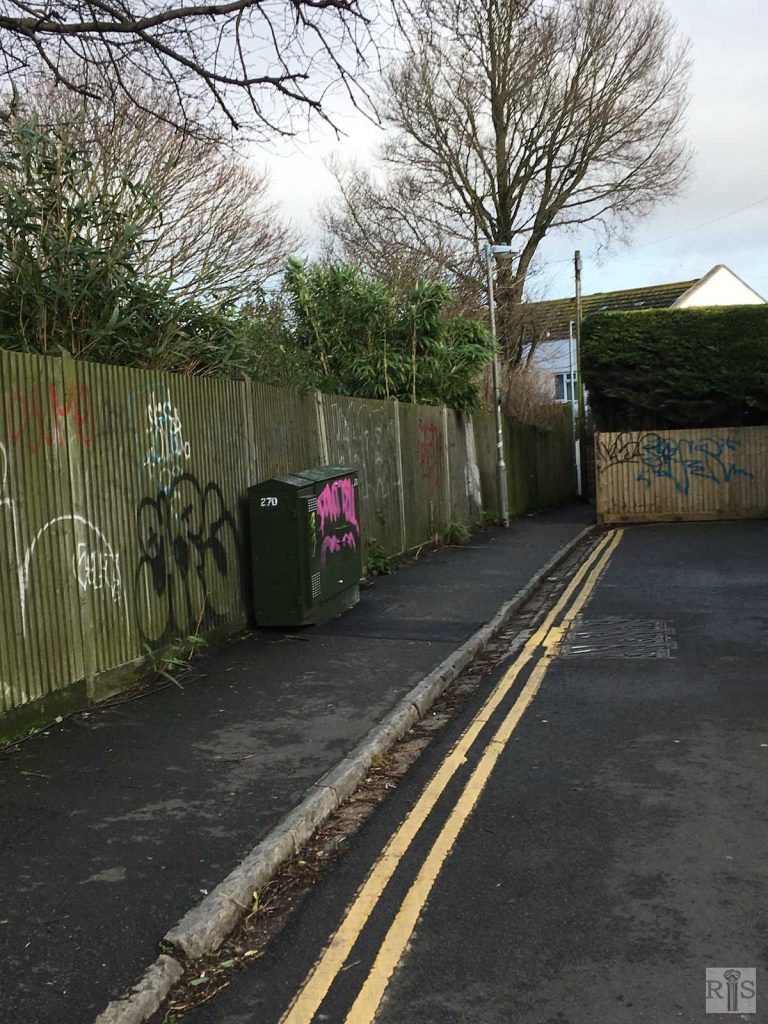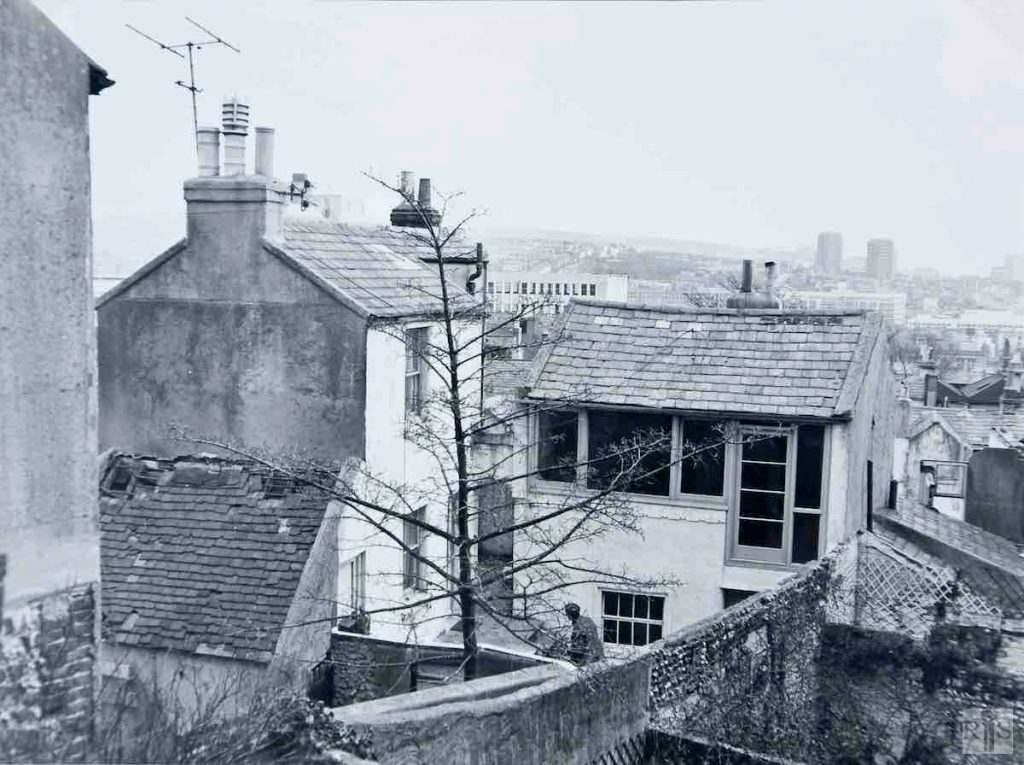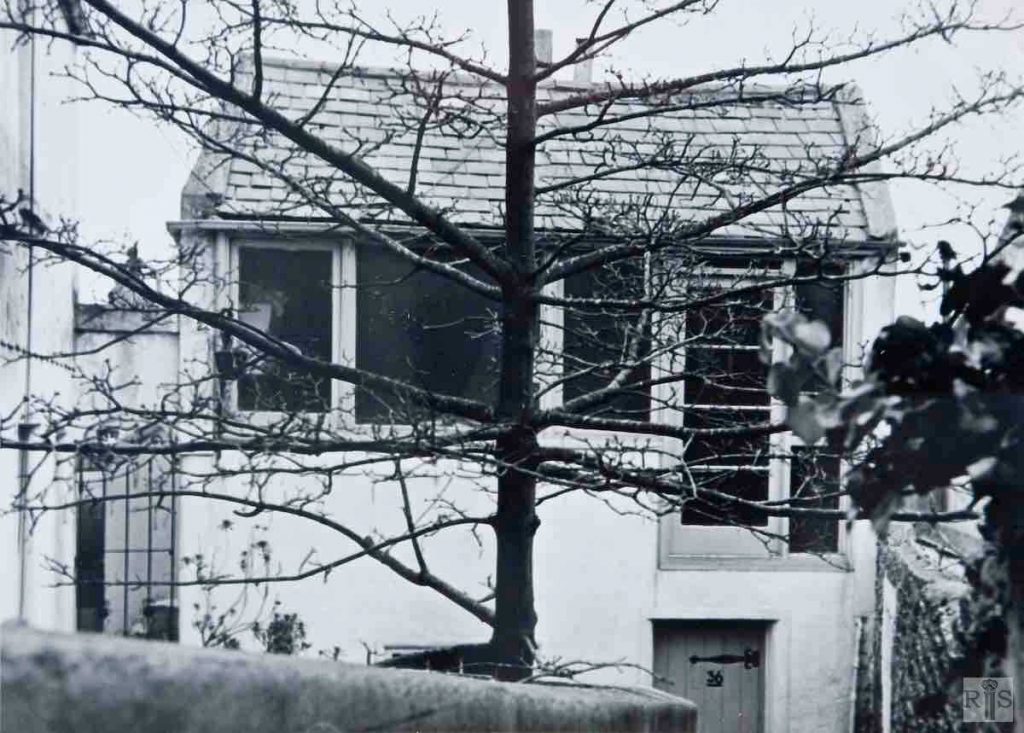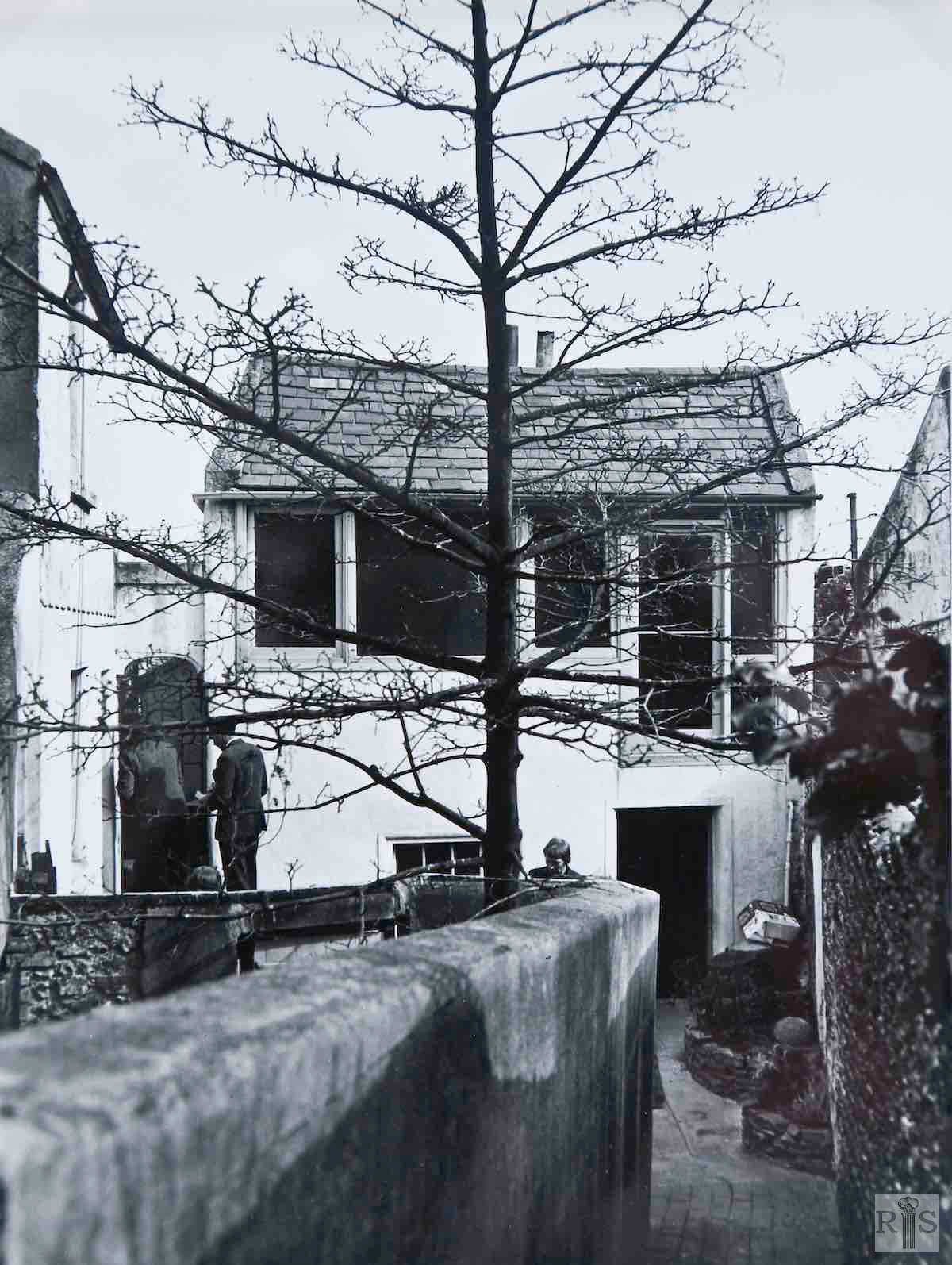
James Gray: St Pauls Schools, in Little Russell Street, being included in the West Street redevelopment scheme, a site had to be found for a new school to replace it. That chosen was to the north of Church Street and bounded by St Nicholas on one side and by Mount Zion Place on the other. If the scheme proceeds all the buildings between will be demolished, including all those houses seen on the right of this photograph. On succeeding pages are shown other parts of this area, which will have to go. Date of photograph May 1963. jgc_31_117
2021: This term [Hereford Street area] is somewhat loosely applied to that dense area in Eastern Brighton bounded by Eastern Road, Lavender Street, Upper St James’s Street, Bristol Road and Montague Place. In this confined space were built during the 1830s no less than 14 streets or passages, running east and west of Upper Bedford Street. Lavender Street, incidentally, took its name from double hedges of lavender, which grew on each side of the road in its early days. The first clearance in this area took place in 1925 when Paradise Street and Manchester Row were completely swept away and the worst of the houses in Hereford Street were demolished and replaced by council houses. Essex Place and Essex Cottages were the next to go, in 1929. Crescent Cottages were dealt with in 1934 and partially rebuilt with new council houses. In the following year Laurel Row was entirely demolished and no trace of this narrow passage now remains. Finally most of Bedford Buildings went in 1937 though a few houses survived the war and stood until 1954. If the Corporation’s plans are carried out several of the remaining streets, such as Essex Street and Somerset Street, will be demolished so that the area can be redeveloped as a single unit. Laurel Row – This unlovely passage between Lavender Street and Upper Bedford Street gave access to no fewer than 40 houses, in various stages of decay. Victorian builders certainly had no inhibitions about the density of their houses. Removed under the terms of a slum clearance scheme in 1935. (Photographer: Mathia Davies)
James Gray: At the Church Street end [of Mount Zion Place], by the side of No 35, was a narrow passage at the end of which were these two cottages Nos 36 and 38. Photographed in March 1968, they were closed soon afterwards and ere long will be removed. Good examples of the way Victorian builders used every tiny plot of land for their cottages. One was used for many years as a photographic studio. jgc_31_126
James Gray: A distant view. jgc_31_127 and jgc_31_128
2018: The cottages were part of a large area demolished to make way for St Paul’s School. The fence on the left of the 2018 photograph is the school boundary. A passageway to the streets beyond still exists. (Photographer: Frances Lindsay-Hills)
